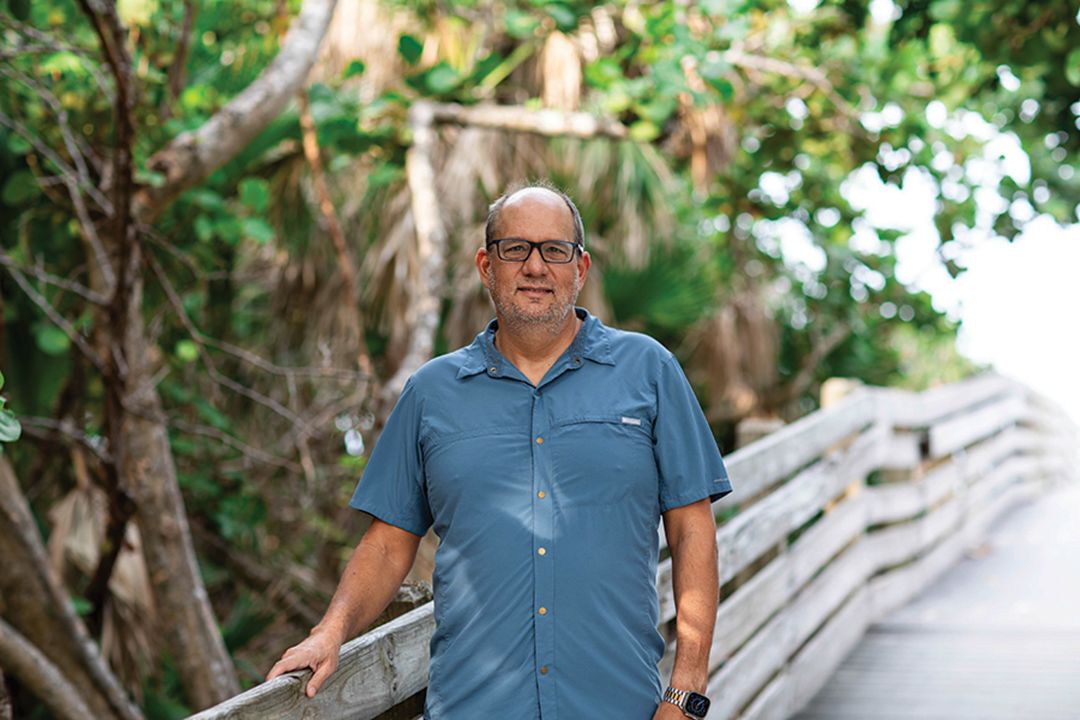What It's Like to Swim the English Channel

Allen Hillman swimming across the English Channel.
Image: Courtesy Photo
In 1875, Matthew Webb became the first person to swim across the English Channel (that we know about, at least), and since then, fewer than 2,000 other people have completed successful solo crossings. In September, Sarasota’s Allen Hillman, a 56-year-old software engineer, joined that elite group by swimming the channel in 11 hours and 44 minutes.
Hillman has been swimming since age 5 and swam competitively through high school and college. He began thinking about swimming the channel about 15 years ago, and when Bambi Bowman, one of his teammates on the Sarasota Sharks Masters swim team, accomplished the feat in 2021, he decided to make a go of it. He contacted Bowman’s coach, Carol Breiter, who swam the channel herself 40 years ago, and began training.
Swimming the channel isn’t just a matter of hopping in the water and setting off. Swimmers hoping to cross must hire a boat to follow along with them, register with a U.K. channel swimming organization and complete a six-hour swim in water below 60 degrees Fahrenheit to prove they have what it takes. Hillman did most of his training swims during lunch breaks at the south branch of CoreSRQ and at the north branch on the weekends, but he had to travel to Lake Tahoe, where the water was 58 degrees, to meet the six-hour swim requirement.
He and his wife arrived in England well before his start date, and Hillman spent the ensuing days training in the harbor at Dover. The journey officially began at 4 a.m. on Friday, Sept. 8. “Most swimmers start out in the early morning like that,” Hillman says. “The channel is generally smoother and calmer and easier to swim in at that time in the morning, so you can get a nice easy start.”
Swimmers follow an escort boat during the trip, and the course is determined by the swimmer’s pace, as well as by currents and tides. Swimmers are not allowed to make physical contact with the boat, but can read messages on a whiteboard for information about periodic feedings. “Every 30 minutes, they tossed me a bottle of hydration and soy-based nutrition that I could chug down, and twice during the swim the bottle also contained liquid ibuprofen for pain relief,” Hillman says.

Allen Hillman
Image: Courtesy Photo
What went through Hillman’s mind during his nearly 12 hours in the water? “Mostly nothing,” Hillman says with a laugh. “I can get into a nice meditative state when I swim, which is why I love doing it. Once I’m in that state and warmed up properly, I feel like I could go forever, as long as I don’t have to change strokes and can stay with the freestyle the whole time.”
The most difficult stretch occurred when Hillman had to swim harder and faster for almost a full hour to make sure he didn’t get pushed off course. But still, he says, “There was never a point that I thought I couldn’t finish.”
Most channel swimmers aim to land somewhere near France’s Cap Gris-Nez, a spit of land west of Calais that is approximately 21 miles across the channel from Dover. At 3:44 p.m., Hillman arrived on a rocky beach just east of that spot.
Unsurprisingly, he says he was “pretty wiped out.” His forearms had begun to lock up during the last half hour of the swim, and he was unable to use them when he first got out of the water. During the two-hour boat ride back to England, he bundled up to stay warm, and he and his wife stayed in the U.K. for another week so he could recover. “I slept for 13 hours the night after the swim,” he says. “I couldn’t use my forearms for about three to four days afterward, and it took a few weeks for them to start feeling normal again.”
Hillman says he has no bucket list of other long swims he wants to accomplish. Crossing the channel has left him feeling relaxed, with zero pressure to attempt another major feat. “A lot of people keep asking me, ‘What’s next?’” Hillman says, “and my No. 1 response to that is, ‘Nothing like this ever again!’ This is one and done, and I’m good with that. I never want to put my body through that again.”



